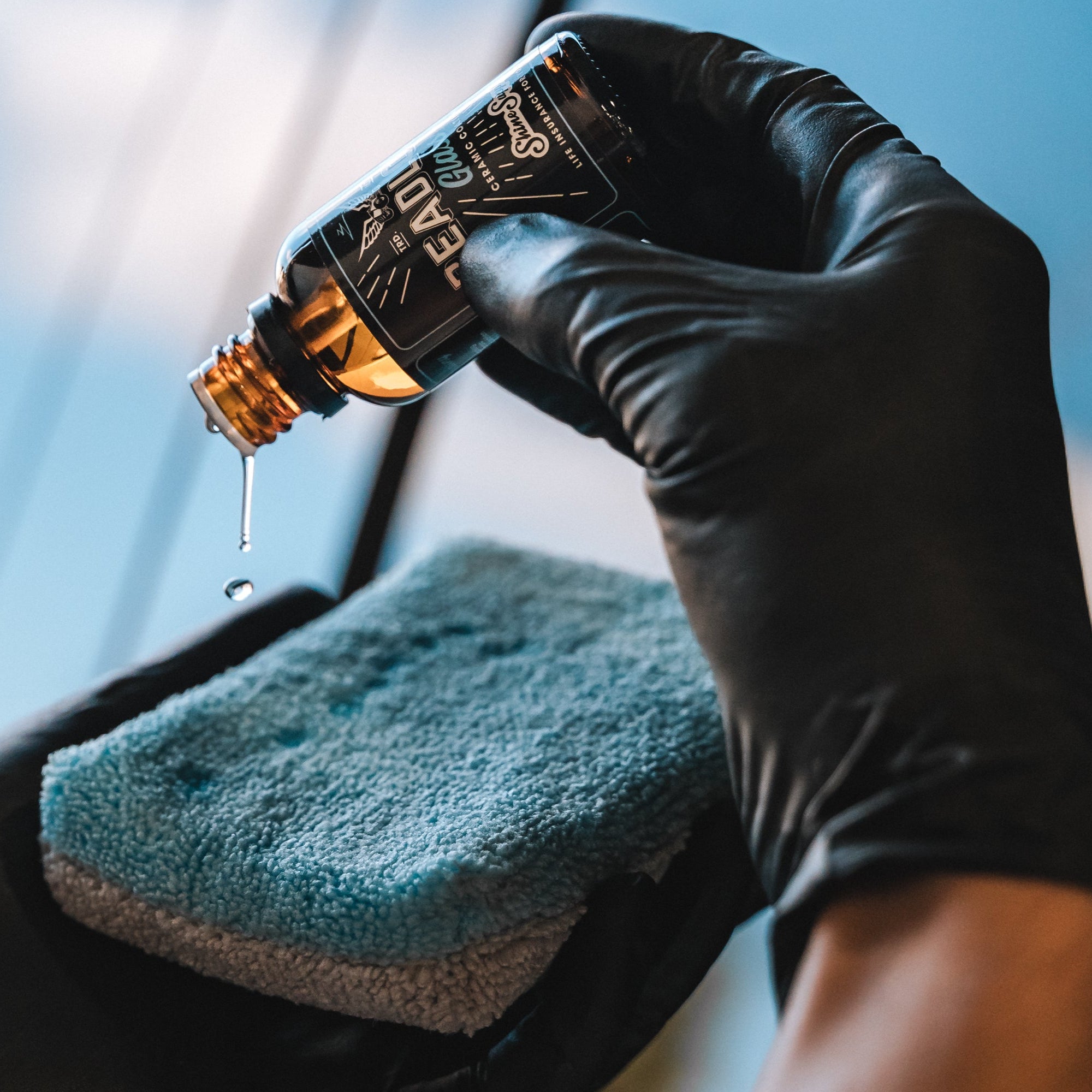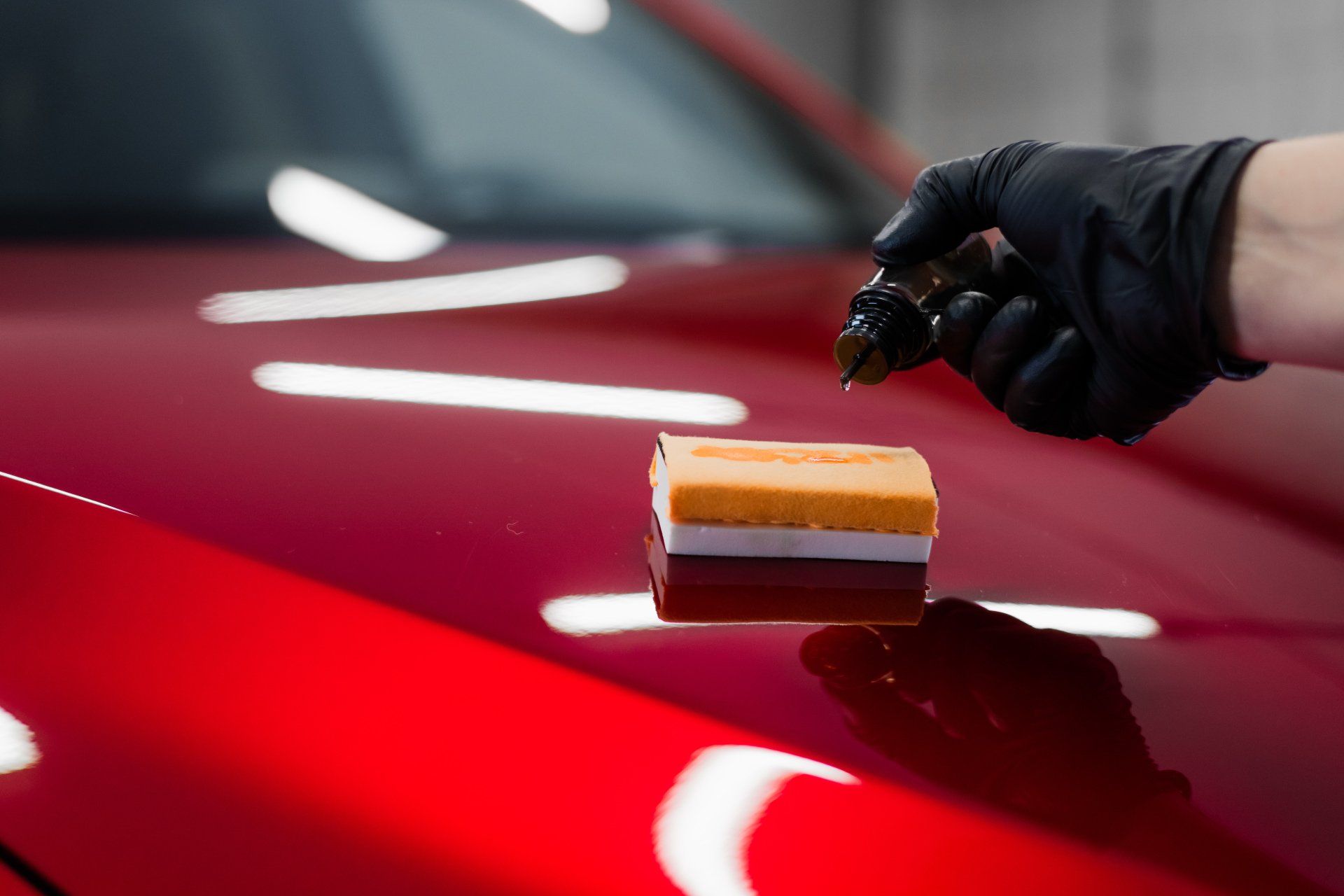Why more vehicle owners are switching to Ceramic Coating Newark this year
Wiki Article
Discovering the Scientific Research Behind Car Ceramic Coating and Its Protective Properties
The science of car ceramic coating presents an interesting research in innovative automotive protection. Composed mainly of silicon dioxide and polymers, these finishings create a durable bond with car paint. This interaction enhances toughness against ecological risks while offering hydrophobic advantages. Nevertheless, the intricacies of how these coverings work and their long-term benefits remain less comprehended. Unpacking these information discloses why ceramic finishings are ending up being a favored choice for car treatmentWhat Is Ceramic Coating?
Ceramic coating is a liquid polymer that chemically bonds to the surface area of an automobile's paint. This innovative safety layer enhances longevity and offers superior resistance to environmental variables. Unlike typical wax or sealers, which give short-lived security, ceramic finishes create a lasting guard that can stand up to extreme problems such as UV rays, acidic pollutants, and extreme climate. When used properly, the coating creates a hydrophobic surface area, creating water to bead and slide off, which helps in keeping the car's cleanliness. In addition, it uses enhanced gloss and deepness to the paint, making the vehicle show up more sleek and dynamic. The application process commonly includes comprehensive surface area prep work, including cleansing and polishing, to ensure peak bonding. As a result, ceramic layers are coming to be increasingly preferred among car lovers and those looking for to safeguard their financial investments, guaranteeing to maintain the car's aesthetic appeal while reducing the frequency of maintenance.The Composition of Ceramic Coatings
The intricate formulation of ceramic coverings mainly includes silicon dioxide (SiO2), which is obtained from natural resources like quartz and sand. This essential component offers the foundation for the coating's sturdiness and safety top qualities. Along with SiO2, ceramic coatings often consist of various polymers and ingredients that enhance adhesion, adaptability, and resistance to ecological aspects. These substances work synergistically to create a durable obstacle against contaminants such as dust, chemicals, and UV rays.Furthermore, some formulas incorporate titanium dioxide (TiO2) or various other nanomaterials, which can boost the coating's hydrophobic homes, resulting in enhanced water repellency. The precise structure can differ greatly amongst makers, affecting efficiency and long life. Inevitably, the combination of these aspects finishes in a safety layer that not only boosts the aesthetic allure of vehicles but likewise serves to lengthen their life-span by protecting the surface from possible damages.Exactly How Ceramic Coatings Job
Comprehending how ceramic coatings function entails discovering their chemical structure, which adds to their safety high qualities. The application process is vital for achieving suitable outcomes, while long life and resilience factors figure out the coating's performance in time. With each other, these elements highlight the benefits and performance of ceramic coatings for car defense.Chemical Composition Explained
While numerous car proprietors look for lasting defense for their vehicles, the chemical make-up of ceramic finishes plays a vital role in their performance. These coatings largely include silicon dioxide (SiO2), which is originated from all-natural minerals. This compound creates a strong bond with the lorry's paint, producing a resilient, safety layer. In addition, many ceramic finishes have titanium dioxide (TiO2), enhancing their hydrophobic residential or commercial properties and resistance to UV rays. The existence of polysiloxanes can better improve versatility and toughness. With each other, these elements add to the coating's ability to fend off water, dust, and pollutants, while additionally providing a high-gloss surface. Understanding this chemical structure aids car proprietors appreciate the durable protection offered by ceramic finishes.Application Refine Summary
Using ceramic coverings includes a thorough process that ensures ideal bonding and security for the automobile's surface area. Detailed cleansing and decontamination of the car's outside are performed to get rid of dirt, crud, and previous waxes. This step verifies that the surface is devoid of impurities that might prevent adhesion. Following this, the paint is often polished to enhance quality and eliminate any type of blemishes. As soon as prepared, the ceramic coating is used in tiny areas utilizing an applicator pad, allowing for consistent coverage. The coating is after that entrusted to cure, developing a strong chemical bond with the surface area. Appropriate curing times and conditions are important, as they validate the coating accomplishes its maximum performance and protective high qualities.Durability and Longevity Aspects
Ceramic coatings are made to supply durable security via their sophisticated chemical composition, which creates a durable barrier against ecological contaminants. The resilience of these finishings is influenced by elements such as the density of the application, the top quality of the item, and the problems under which the automobile is exposed. High-grade ceramic coatings can last several years, standing up to scrapes, UV rays, and chemical spots. Correct maintenance, consisting of routine cleaning and routine reapplication, can further improve durability. Furthermore, environmental factors like environment and direct exposure to contaminants can influence the lifespan of the coating. In general, when used and kept properly, ceramic finishes supply remarkable durability, making them a prominent choice for car enthusiasts looking for to maintain their vehicle's appearance.Hydrophobic Characteristics and Water Repellency
Hydrophobic residential properties are a characteristic of high quality car ceramic coatings, substantially improving the vehicle's surface area performance. These finishes develop a molecular bond with the helpful site car's paint, causing a surface area that wards off water successfully. When water comes right into contact with a ceramic-coated surface, it grains up and rolls off, lessening the quantity of liquid that stays on the paint. This actions not just adds to a visually pleasing look but also reduces the accumulation of impurities such as dust, crud, and roadway salts.The enhanced water repellency causes easier cleaning and maintenance, as less effort is called for to remove unwanted compounds. Additionally, the hydrophobic nature of ceramic layers assists in avoiding water spots, which can mar the coating of uncoated surface areas. On the whole, the incorporation of hydrophobic residential or commercial properties in ceramic layers plays a vital role in preserving the lorry's beautiful look while streamlining upkeep.Security Versus Scratches and UV Damage
Car ceramic finishes provide substantial protection against scrapes and UV damage. The scratch resistance system develops a long lasting layer that soaks up impacts, while the UV protecting benefits assist maintain the vehicle's paint stability in time. Together, these features add to a longer-lasting and visually appealing finish.Scrape Resistance Device
Using sophisticated innovation, ceramic coverings offer a robust shield against scratches and UV damage, enhancing the long life and look of lorry surfaces. The scratch resistance system of these coverings is associated to their special molecular framework, which forms a long lasting bond with the vehicle's paint. This bond develops a hard, safety layer that can absorb effects and stand up to abrasions. Additionally, the smooth surface area of the coating lowers friction, making it tough for contaminants to adhere and trigger scrapes. The chemical composition of ceramic coatings frequently consists of nanoparticles that reinforce the safety layer, more boosting its strength. Subsequently, cars treated with ceramic finishings display markedly improved scratch resistance compared to conventional wax or sealants, making sure a pristine finish gradually.UV Shielding Perks
The safety qualities of ceramic finishes prolong beyond scratch resistance to include substantial UV protecting benefits. These finishes produce a robust barrier that reflects hazardous ultraviolet rays, protecting the car's paint and underlying materials. Prolonged exposure to UV radiation can bring about fading, oxidation, and deterioration of the paint finish. click resources By integrating ceramic finishings, car owners can effectively minimize these threats, protecting the aesthetic allure and honesty of their vehicles. Furthermore, the UV blocking properties add to boosted durability, decreasing the regularity of repainting and upkeep. Inevitably, the combination of ceramic finishings offers a comprehensive service for protecting lorries from the damaging impacts of sunlight exposure, making sure a continual, lively appearance in time.The Long life and Maintenance of Ceramic Coatings

Often Asked Questions
Can Ceramic Coating Be Applied to Any Kind of Vehicle?
Ceramic coating can be put on various kinds of vehicles, including autos, vehicles, and motorbikes. Nevertheless, surface prep work and compatibility with certain products are vital for suitable attachment and this link performance of the coating.Exactly How Much Does Ceramic Coating Normally Expense?
Ceramic coating normally costs in between $500 and $2,000, depending upon factors such as automobile size, coating top quality, and expert application. The investment can offer lasting security and enhance the vehicle's look with time.
Is Specialist Application Needed for Best Outcomes?
The requirement of expert application often relies on preferred outcomes. Experts normally ensure appropriate surface prep work and application strategies, bring about excellent bonding and long life of the coating, which may be challenging for unskilled people to achieve.Can Porcelain Coatings Be Eliminated or Repaired?
Ceramic coatings can be gotten rid of or repaired, though the process might require certain solvents or strategies - Ceramic Coating Newark. Appropriate elimination is vital to prevent damage to the underlying surface area, highlighting the relevance of specialist support for suitable resultsJust How Does Ceramic Coating Contrast to Typical Wax?
The contrast between ceramic coating and typical wax discloses that ceramic finishes provide remarkable durability, boosted security versus ecological contaminants, and longer-lasting shine, while wax calls for a lot more constant application and supplies less total resistance to damages.Report this wiki page